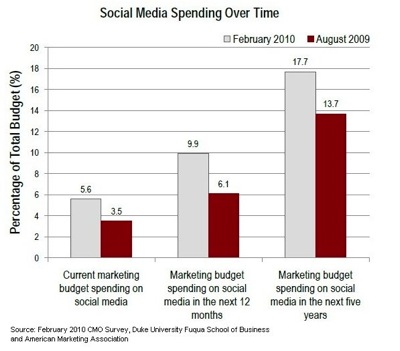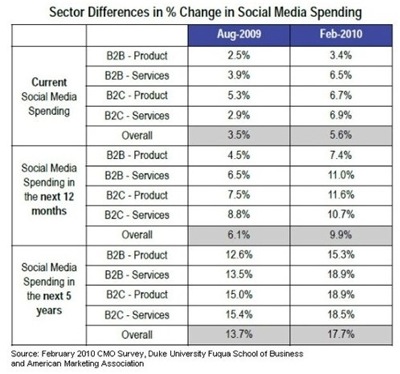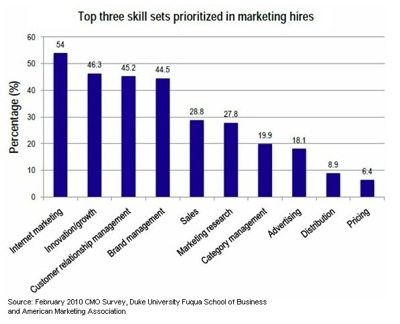Sorav Jain at Social Media Today has compiled a set of wide ranging social media-oriented facts for 2010. No matter what your take is on social media, this is most like some tidbit of information that will be of interest.

General Facts
1. Australia has the most number of established users of social media in the world, followed by USA and UK.
2. In terms of the impact of social networks on advertising, word of mouth is the popular option with 78% of customers trust peer recommendations on sites. While, only 14% trust advertisements.
3. Advertising has also been impacted greatly because of social media with only 18% of traditional TV campaigns generate a positive return on investment.
4. Facebook, Blogspot followed by Myspace are the top sites visited by under 18s.
5. An average user becomes a fan of 2 pages every month.
6. 24 out of the 25 largest newspapers are experiencing declines in circulations because the news reaches users in other formats.
7. 25% of search results for the world’s top 20 brands are linked to user-generated content.
8. *In a sample survey of 2884 people across 14 countries, 90% of participants know at least one social networking site.
9. * In a sample survey of 2884 people across 14 countries,72% of participants of the internet population are active on at least 1 networking sites. The top 3 countries part of at least 1 network site was Brazil (95%), USA (84%), and Portugal (82%).
10. * In a sample survey of 2884 people across 14 countries, users of social networking sites are saturated. Connected people feel no need to further expand their membership on other social network sites.
11. * In a sample survey of 2884 people across 14 countries, on an average, users log in twice a day to social networking sites and 9 times a month on professional websites.
12. * In a sample survey of 2884 people across 14 countries, sending personal messages is the most popular online activity. The top 5 activities online are sending personal messages, watching photos, checking status, reacting to others’ status, and uploading pictures.
13. * In a sample survey of 2884 people across 14 countries, people have about 195 friends on an average.
Source: •
*Online sample survey of 2,884 consumers spread over 14 countries between the age of 18 to 55 years old by Online Media Gazette.

Facebook Facts
14. Facebook has over 500 million users.
15.If Facebook were a country, it would be the world’s 3rd largest country.
16. An average Facebook user spends about 55 minutes a day on the site.
17. An average Facebook user spends about 6.50 hours a week on the site.
18. The average Facebook user spends 1.20 days a month on the site.
19. Facebook’s translation application support over 100 languages.
20. There are over 900 million objects that people interact with (pages, groups, events and community pages)
21. Average user is connected to 80 community pages, groups and events
22. Average user creates 90 pieces of content each month
23. More than 30 billion pieces of content (web links, news stories, blog posts, notes, photo albums, etc.) shared each month.
24. ** In a sample survey of 2884 people across 14 countries, Facebook is studied to have the highest penetration. The top 3 sites include Facebook (51%), MySpace (20%), and Twitter (17%).
25. **Over 300,000 users translate the site through the translations application.
26. **Over 150 million people engage with Facebook on external websites every month.
27. **Two-thirds of comScore’s U.S. Top 100 websites and half of comScore’s Global Top 100 websites are integrated with Facebook.
28. **There are over 100 million active users accessing Facebook currently through their mobile devices.
Source:
• *Online sample survey of 2,884 consumers spread over 14 countries between the age of 18 to 55 years old by Online Media Gazette.
• ** Statistics from Facebook press office.

YouTube Facts
29. The most popular YouTube video – Justin Bieber, Baby ft. Ludacris has had over 374,403,983 views
30. ** YouTube receives over 2 billion viewers each day.
31. ** 24 hours of video is uploaded to YouTube by users every minute.
32. ** 70% of YouTube users are from the United States.
33. ** More than half of YouTube’s users are under the age of 20.
34. ** To watch all the videos currently on YouTube, a person has to live for around 1,000 years.
35. ** YouTube is available across 19 countries and in 12 languages.
36. ** Music videos account for 20% of uploads on YouTube.
Source:
• ** Statistics from YouTube press centre.

Blogger Facts
37. There are over 181 million blogs.
38. 34% of bloggers post opinions about products and brands.
39. ** The age group for 60% of bloggers is 18-44 years.
40. ** One in five bloggers updates their blogs every day.
41. ** Two thirds of bloggers are male.
42. ** Corporate blogging accounts for 14% of blogs.
43. ** 15% of bloggers spend 10 hours a week blogging.
44. ** More than half of all bloggers are married and/or parents.
45. ** More than 50% of bloggers have more than one blog.
Source:
• ** Statistics from Technorati’s State of the Blogosphere 2009.

Tweet Facts
46. 54% of bloggers post content or tweet on a daily basis.
47. 80% of Twitter users use Twitter on mobile devices.
48. There have been over 50 million tweets in 2010.
49. The 10 billionth Twitter’s tweet was posted in March 2010.
50. **There are over 110 million users of Twitter currently.
51. **180 million unique users access Twitter each month.
52. **More than 600 million searches happen on Twitter every day.
Source:
• Box Hill Institute: Box Hill Institute (Social Media at Box Hill Institute)
• **Statistics from Twitter and the Chirp Conference.
 LinkedIn Facts
LinkedIn Facts
53. Of the 60 million users of LinkedIn half of them are from outside US.
54. By March 2010 Australia alone had over 1 million LinkedIn users.
55. 80% companies use LinkedIn as a recruitment tool.
56. **Every second a new member joins LinkedIn.
57. **Almost 12 million unique visitors visit LinkedIn every day.
58. ** LinkedIn has executives from all Fortune 500 companies.
59. **1-in-20 LinkedIn profiles are accounted by recruiter.
Source:
• ** Statistics from LinkedIn press centre and SysComm International.

Wikipedia Facts
60. If $1 was paid to you for every time an article was posted on Wikipedia, you would earn $156 per hour.
61. *Wikipedia has the maximum number of articles at 3 million articles. This is followed by, German (1.08 million), French (958,000), Italian (697,000), and Spanish (608,000).
62. **69% of users edit Wikipedia to fix errors.
63. **73% of Wikipedia users edit Wikipedia because they want to share knowledge.
64. **4.4% editors of Wikipedia’s are PhD’s, 19% of the editors hold master degrees.
65. **Bad weather usually results in more number of updates in Wikipedia.
66. **13% of the editors on Wikipedia are women.
Source:
• Social Media Today
• * http://www.axleration.com/15-interesting-facts-about-wikipedia/
• ** http://pochp.wordpress.com/2010/08/16/surprising-facts-about-wikipedia/
 Foursquare Facts
Foursquare Facts
67. Over the last first year of Foursquare, it has more than half a million users, 1.4 million venues, and 15.5 million check-ins.
68. * Foursquare is five times larger than Gowalla.
69. * Foursquare is growing 75% faster than Gowalla each day.
70. **Foursquare passed the 3 million users milestone in August 2010.
Read Full Post »











